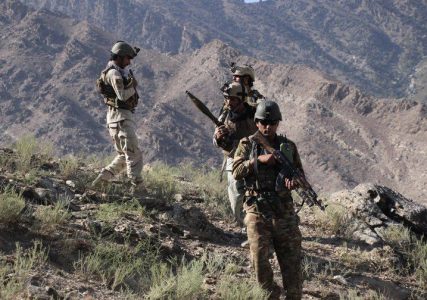
New ISIS ‘caliphate’ in the mountains of Afghanistan
ISIS is not defeated. Quite the reverse: having lost most of its former lands in Syria and Iraq, it is taking root elsewhere. There is abundant evidence that it has taken root in the Sahel region of the southern Sahara, even to the extent of establishing a proto-caliphate there. But an even more substantive rebirth may be under way on the opposite side of the Islamic world – in Afghanistan.
Not that there is a shortage of Islamist fighters already there. After seventeen years of war the Taliban movement is very much in evidence and may now control as much as half of the country. This has prompted a new round of talks this week, with Pakistani and Taliban officials meeting in Islamabad while their US and Afghan counterparts meet in Kabul. But a sudden surge of attacks by ISIS paramilitaries in Afghanistan has caught all the parties by surprise.
One of the few western news outlets that has persistently sought to cover the post-caliphate evolution of ISIS is Associated Press, not least with Sarah El Deeb reporting from Iraq and Syria, and Kathy Ganon from Jalalabad in eastern Afghanistan. Ganon emphasises the surprising progress that ISIS has made, to the point of now controlling sizeable mountainous areas of north-east Afghanistan. As she puts it:
Nearly two decades after the US-led invasion, the extremist group is seen as an even greater threat than the Taliban because of its increasingly sophisticated military capabilities and its strategy of targeting civilians, both in Afghanistan and abroad. Concerns run so deep that many have come to see the Taliban, which has also clashed with IS, as a potential partner in containing it.
The encroachment of ISIS into Afghanistan, which it calls the Khorasan Province of the caliphate, started nearly five years ago. Its first moves in the country came some months before a US-led coalition started its intense air war against ISIS in Syria and Iraq, killing over 60,000 supporters and civilians in a little-reported war. Even while this was happening, however, ISIS was expanding its activities in Afghanistan.
Once the US saw what was going on it used considerable air power to try to kill the local ISIS leaders and claimed to have snuffed out their prospect there. The truth was that ISIS survived and brought in experienced paramilitaries and equipment. Its current strength stems from these combat-trained fighters, who were joined by Pakistani Taliban and further expanded in 2015 when the Islamic Movement of Uzbekistan joined the ranks. US and Pakistani officials now estimate that ISIS has thousands of fighters in Afghanistan drawn from Central Asia, including Chechnya, but including Indians, Bangladeshis and even ethnic Uighurs from China.
Associated Press reports that ISIS is busiest in four provinces – Nangarhar, Nuristan, Kunar and Laghman –with the high-altitude zones of Kunar especially well controlled. Indeed, the view from Moscow is that this province will be at the centre of a ‘launch pad’ for international activities, much as south-eastern Afghanistan was for al-Qaida in the run-up to 9/11.
Whereas the Taliban is primarily nationalist, concerned with gaining control of more of Afghanistan, Khorasan Province of ISIS looks outwards. For that reason US terrorism analysts see recent major bombing attacks in Kabul as practice for working in the world of the far enemy – western Europe and the US.
In what is for the US a troubling repetition of history, Afghanistan is not just proving to be a Taliban-linked problem for Washington. It contains a much more dangerous entity, ISIS, with transnational ambitions and increasing power: even after its losses in the Middle East it remains active there, with daily attacks especially in Iraq. Trump may want to get the troops out of Afghanistan but that is looking highly unlikely any time soon.
Source: Open Democracy





